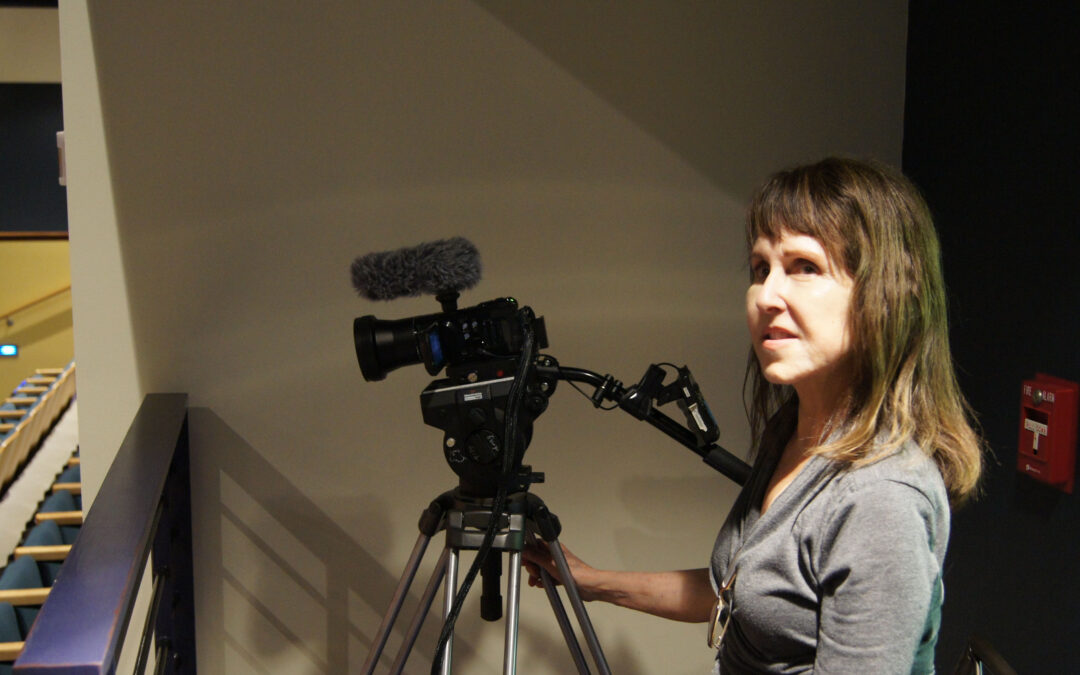(IMAGE: Director Leslie Streit, via Cinematiks)
Cinematiks, 2022. 94 minutes. Documentary
Grade: 1.5 out of 4
It would be hard to come up with a title less interesting to me than An American Ballet Story, but that didn’t mean I wasn’t up for the challenge. I’ve tried to find all sorts of contexts that will help me appreciate ballet as an art – comparing it to action movie choreography or professional wrestling, for example. They’re all about human body movement trying to tell a story. Yet it still doesn’t quite come together for me, though there’s a modern number at the end of this documentary which is inspired by Rodin’s “The Kiss” sculpture that looked quite impressive. For much of the rest of the movie, though, I was more appreciative of the fact that old footage had been collected than I was of what was on it. And that might just be a me problem.
What isn’t a me problem, I don’t think, is the relatively rote way Leslie Streit’s documentary tells the story of New York’s Harkness Ballet. It’s all very A to Z – old pictures are slowly zoomed in on, talking heads tell us what they did there and when, and footage of some of the dances gives us a look at what they’re like. It lays out facts like a history book, with relatively little context for viewers who may not already know much, or anything, about ballet. As the end credits reveal, many of the interview subjects died before the film could come out – like, a LOT of them – which gives the film significant archival value. But to the extent that it’s appreciated, it will be more so by those already interested in studying the history of New York ballet than by the general public. The film sprang out of an assignment to film a workshop, which then grew to something much larger involving an interactive study guide. It still feels more like that than a story-driven feature.
One could compare it to a Wikipedia page, except that the Wikipedia page for founder Rebekah Harkness is actually a lot more entertaining. There, you can learn things the film won’t tell you, like the fact that she used to be part of a 1932 guerilla performance group called the Bitch Pack, who did the equivalent of flash mobbing, with spontaneous stripteases and punch spikings at high society events. She once filled a swimming pool with Dom Perignon, and painted her neighbor’s cat green. One of her children did time for manslaughter; another was institutionalized. The movie mentions none of this, speculating merely that some of the New York highbrow crowd disliked her for being rich, and being an unusual arts patron who also wanted to be a star creative.
If conflict is the essence of drama, however, this documentary prefers not to be dramatic. The Harkness school was formed out of a conflict with the Joffrey ballet, which she wanted to rename after herself, resulting in a split between the two. Many public figures like New York Times critic Clive Barnes seemed to take Joffrey’s side – but was it really because of the split, or because of some of her other rowdy behavior that frequently got her in the tabloids and might have come across unseemly to fans of high art? Or perhaps plain old misogyny? Streit doesn’t seem especially interested in exploring that angle very far, and we don’t hear from anyone who might articulate the opposing point of view, or more historical context. To the extent that An American Ballet Story does deal with conflict, it’s mostly between the classical and the modern styles of ballet, which it counts on the viewer to already be able to differentiate.
To those who are already interested in and familiar with ballet, this story may be one that fills in crucial gaps in your knowledge. To anyone who isn’t, it’s not going to make converts, nor, indeed, does it seem to aspire to. Though if anyone wants to make an actual Harkness biopic someday, well, I confess to some curiosity there. But that’s not the film this is, nor the one any should expect it to be.

